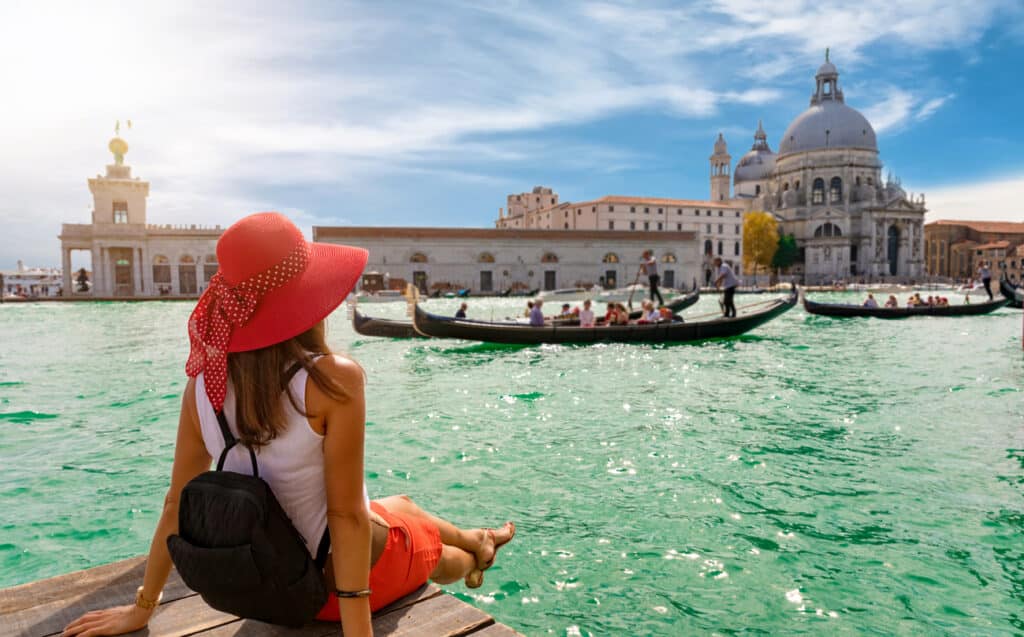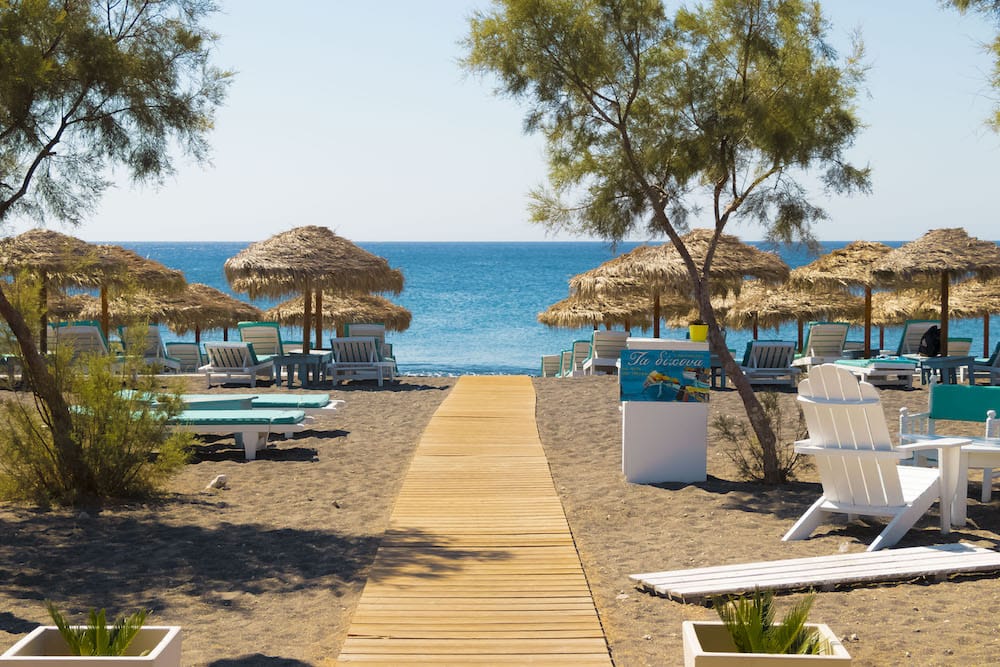How to Move to Italy from the US

If you’re thinking of moving to Italy from the US, it’s never too early to start planning. This guide breaks down everything you will need to know, from visas to practical considerations to foreign capital gains taxes. Here’s how to make your dream of living in Italy a reality.
Types of Visas When Moving to Italy from the US
To move to Italy from the US, you will have to apply for a visa. Italy offers several visa options tailored to different situations.
Understanding these different types of visas available when moving to Italy is crucial for planning a successful relocation. Consider your purpose for moving and choose the visa option that best suits your needs and circumstances.
Elective Residence Visa (Residenza Elettiva)
- Who it’s for: Individuals who can support themselves financially without needing employment in Italy.
- Overview: The Elective Residence Visa allows non-EU citizens, including Americans, to reside in Italy for an extended period without engaging in work activities. It is ideal for retirees or individuals with independent income sources.
- Requirements:
- Proof of financial stability, such as bank statements or pension income
- Health insurance coverage that is valid in Italy
- Clear criminal record demonstrated through a background check
- Evidence of suitable accommodation in Italy
Work Visa (Visto di Lavoro)
- Who it’s for: Individuals who have been offered employment by an Italian employer.
- Overview: The Work Visa allows non-EU citizens to legally work in Italy. It is typically tied to a specific job offer and employer.
- Requirements:
- A valid job contract or employment offer from an Italian company
- Approval of a work permit (nulla osta) from the Italian authorities
- Health insurance coverage that meets Italian standards
- Proof of qualifications or expertise relevant to the job position
Student Visa (Visto di Studio)
- Who it’s for: Students who have been accepted to study at an Italian educational institution.
- Overview: The Student Visa allows individuals to pursue academic studies in Italy. It may also provide opportunities for part-time work during the academic year or full-time work during scheduled breaks.
- Requirements:
- Letter of acceptance from an accredited Italian educational institution
- Proof of financial means to support oneself during the stay
- Health insurance coverage for the duration of the visa
- A clear plan outlining the course of study and educational goals
Family Visa (Visto per Motivi Familiari)
- Who it’s for: Family members of Italian citizens or legal residents in Italy.
- Overview: The Family Visa facilitates family reunification by allowing spouses, children, and other dependent relatives to join their family members in Italy.
- Requirements:
- Proof of the family relationship, such as marriage or birth certificates
- Financial stability to support the family member(s) during their stay in Italy
- Health insurance coverage for the family members
- Adequate housing arrangements for the family in Italy
Investor Visa (Visto per Investitori)
- Who it’s for: Individuals who intend to make a significant investment in Italy.
- Overview: The Investor Visa encourages foreign investment in Italy by granting residency to individuals who commit to certain investment activities.
- Requirements:
- Proof of substantial investment in Italian businesses, real estate, or government bonds
- A detailed business plan outlining the investment objectives and projected economic impact
- Compliance with Italian financial regulations and tax laws
- Health insurance coverage for the investor and their family members
How to Apply for an Italian Visa
1. Gather the Necessary Documents
These documents may include:
- Passport: Ensure that your passport is valid for at least three months beyond your planned stay in Italy. It should also have at least two blank pages for visa stamps.
- Visa application form: Obtain the appropriate visa application form from the Italian consulate or embassy in your jurisdiction. Complete the form accurately and legibly, providing all requested information.
- Proof of accommodation: Provide evidence of where you will be staying during your time in Italy according to your foreign rental income. This could include hotel reservations, a rental agreement, or a letter of invitation from a host.
- Financial statements: Demonstrate your financial means to support yourself during your stay in Italy. This may include bank statements, proof of income, or sponsorship letters if applicable.
- Proof of insurance: Provide documentation of health insurance coverage that meets the requirements set by Italian authorities. This may include a policy certificate, insurance card, or letter from the insurance provider confirming coverage during your stay in Italy.
- Other supporting documents: Depending on the type of visa you are applying for, you may need additional documents such as:
- A letter of acceptance from an Italian educational institution (Student Visa)
- A job contract from an Italian employer (Work Visa)
- Proof of family relationship (Family Visa)
Need some motivation to get started? Check out Gio’s story to know how he managed as an expat in Italy!
2. Submit Your Application
Reach out to the Italian consulate or embassy nearest to you to schedule an appointment for your visa application. Some consulates may accept applications by mail or through a visa processing center.
Ensure that you understand the specific requirements for the type of visa you are applying for. Different visa categories may have varying documentation and eligibility criteria.
Be prepared to pay the visa application fee, which varies depending on the type of visa and your nationality. Payment methods and fee amounts will be specified by the consulate or embassy.
3. Attend the Visa Interview (if required)
Some visa categories may require you to attend an in-person interview at the consulate or embassy. Prepare for the interview by familiarizing yourself with the purpose of your trip, your planned activities in Italy, and any supporting documentation you have provided.
4. Wait for Processing
After submitting your application and attending any required interviews, await processing by the Italian authorities. Processing times may vary depending on factors such as the time of year, the volume of applications, and the complexity of your case.
You can check the status of your visa application online or by contacting the consulate or embassy where you submitted your application.
5. Receive Your Visa
Once your visa application is approved, you will receive your passport with the visa affixed to one of its pages. Ensure that all details on the visa are accurate, and check the validity dates to confirm your permitted stay in Italy.
If your visa application is denied, you will receive a written explanation of the reasons for the refusal. You may have the option to appeal the decision or reapply for a visa after addressing any deficiencies in your application.
Practical Considerations When Planning to Move to Italy as an American
Moving to Italy involves more than just obtaining a visa. It’s essential to consider various practical aspects to ensure a smooth transition. Here are some key factors to keep in mind:
Banking
- Research Italian banks and their services to find one that suits your needs. Popular banks in Italy include UniCredit, Intesa Sanpaolo, and Banca Monte dei Paschi di Siena.
- To open a bank account in Italy as a foreign resident, you’ll typically need to visit a branch in person and provide identification, such as your passport, proof of address, and sometimes a residency permit.
- Consider opening a basic current account (conto corrente) for everyday banking needs. Some banks offer online account opening services, making the process more convenient.
Housing
- Start your housing search early to secure accommodation before your move. Websites like Immobiliare.it and Idealista.it list rental and for-sale properties across Italy.
- Consider renting initially to familiarize yourself with different neighborhoods and housing options. Rental contracts typically require a security deposit (cauzione) equivalent to a few months’ rent.
- Be prepared to provide documentation such as proof of income, a copy of your passport, and sometimes a tax code (codice fiscale) when renting a property in Italy.
Utilities and Services
- Upon securing accommodation, you’ll need to set up utilities such as electricity, gas, water, and internet. Contact utility providers to arrange service activation and provide meter readings if necessary.
- Utility bills in Italy are typically paid monthly or bimonthly through direct debit or bank transfer. Ensure you understand the billing process and payment deadlines to avoid service interruptions.
- Mobile phone and internet plans are widely available in Italy. Compare offerings from providers like TIM, Vodafone, and WindTre to find a plan that meets your communication needs and budget.
Transportation
- Italy has an extensive public transportation network, including trains, buses, and metros. Consider purchasing a reloadable transit card (e.g., RicaricaMi) for convenient access to public transport services.
- If you plan to drive in Italy, familiarize yourself with local traffic laws and regulations. You may need to obtain an International Driving Permit in addition to your valid US driver’s license.
- Vehicle ownership in Italy involves registration with the Motor Vehicle Registry (Pubblico Registro Automobilistico) and payment of vehicle taxes (bollo auto) and insurance premiums.
Healthcare
- Italy has a publicly funded healthcare system that provides essential medical services to residents. Register with the National Health Service (Servizio Sanitario Nazionale) to access subsidized healthcare.
- Consider purchasing private health insurance to supplement public healthcare coverage and access additional services and amenities.
Education (if applicable)
- If you have school-aged children, research educational options in Italy. Consider public, private, or international schools, depending on your preferences and budget.
- Enrollment requirements vary by school but may include documentation such as school records, vaccination records, and proof of residency.
- Language barriers may exist in Italian schools, especially for non-Italian-speaking children. Consider language support programs or bilingual schools to facilitate your child’s transition.
You’ve received a gift from foreign person? We know how to help you!
Where to Live in Italy
Italy offers a diverse range of cities, towns, and regions, each with its own unique charm, culture, and lifestyle. Whether you prefer bustling urban centers, picturesque coastal towns, or tranquil countryside settings, Italy has something to suit every preference. Here are some top destinations to consider when choosing where to live in Italy.
Rome
As the capital city of Italy, Rome is steeped in history, culture, and architectural wonders. From iconic landmarks like the Colosseum and Vatican City to vibrant neighborhoods and lively piazzas, Rome offers a dynamic urban experience.
Residents of Rome enjoy world-class museums, theaters, and galleries, as well as an eclectic culinary scene featuring traditional Roman cuisine and international fare.
Rome’s central location in Italy provides convenient access to other regions via extensive transportation networks, including trains and buses.
Milan
Known as Italy’s fashion and design capital, Milan is a bustling metropolis renowned for its cosmopolitan atmosphere, high-end shopping districts, and thriving business opportunities.
Milan boasts a vibrant arts and culture scene, with renowned museums, art galleries, and architectural landmarks such as the Duomo di Milano and La Scala Opera House.
The city’s diverse neighborhoods offer a range of housing options, from historic apartments in the city center to modern condominiums in suburban areas.
Florence
Nestled in the heart of Tuscany, Florence is a UNESCO World Heritage site renowned for its rich history, stunning architecture, and world-class art collections.
Florence’s compact size and pedestrian-friendly streets make it an ideal city for exploring on foot, with iconic landmarks such as the Florence Cathedral, Uffizi Gallery, and Ponte Vecchio within easy reach.
Residents of Florence enjoy a high quality of life, with access to picturesque parks, gardens, and scenic views of the Arno River valley.
Venice
Known for its romantic canals, historic palaces, and iconic gondolas, Venice is a UNESCO World Heritage site and one of Italy’s most enchanting cities. Despite its popularity with tourists, Venice offers a unique residential experience for those seeking to immerse themselves in its timeless beauty and cultural heritage.
Residents of Venice enjoy a pedestrian-oriented lifestyle, with narrow cobblestone streets, artisan workshops, and quaint cafes tucked away in its labyrinthine neighborhoods.
Sicily
Italy’s largest island, Sicily, offers a blend of Mediterranean culture, history, and natural beauty. From the vibrant city of Palermo to the picturesque coastal towns of Taormina and Cefalù, Sicily boasts diverse landscapes and cultural attractions.
With its sunny climate, pristine beaches, and affordable cost of living, Sicily appeals to retirees, remote workers, and expatriates seeking a relaxed lifestyle by the sea.
Moving Incentives
Some regions and cities in Italy offer financial incentives to encourage outsiders to settle down. For example, you may receive an incentive in the following locations:
- Calabria: Up to €28,000
- Presicce-Acquarica: Up to €30,000
- Sardinia: Up to €15,000
- Mantua: €150/month
- Santo Stefano di Sessanio: Up to €24,000
Tax Implications of Moving to Italy from the US
Upon establishing residence in Italy, you may become subject to Italian taxation on your worldwide income and assets. Non-residents of Italy are typically only taxed on income earned within Italy, while residents are subject to taxation on their global income.
Italy’s tax system comprises various taxes, including personal income tax (Imposta sul Reddito delle Persone Fisiche [IRPF]), corporate income tax, value-added tax (VAT), and property taxes.
In addition to this, you will have to file a US tax return while living in Italy. You may also be required to file an FBAR and FATCA report. This could open you up to double taxation. Fortunately, the US and Italy have a tax treaty in place to help prevent this.
The IRS also provides several tax benefits for Americans living in Italy, including:
Using these benefits, many expats are able to erase their US tax bill entirely.
Start Your New Life in Italy with Confidence
We hope this guide has given you a better understanding of how to move to Italy from the US. If you still have questions about your overseas taxes, we’d be happy to answer them all!
At Greenback Expat Tax Services, we help Americans around the world file their taxes accurately and on time. Just let us know how we can assist you, and we’ll get right to work!



